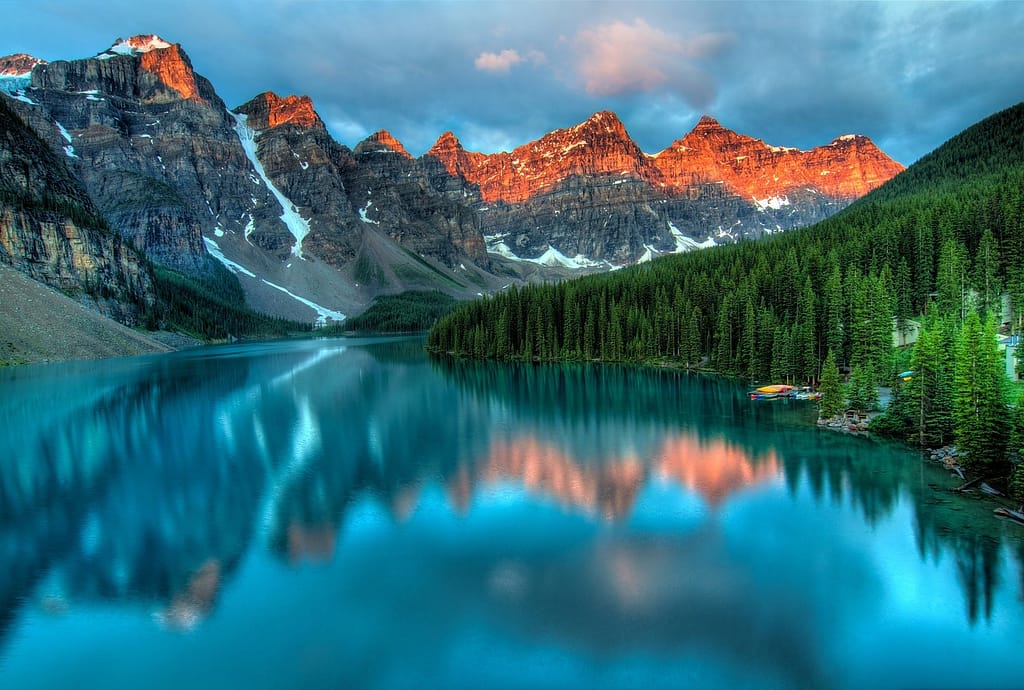Introduction
Have you ever wandered through a dense, leafy forest or taken a leisurely stroll in the woods and wondered, “What exactly is the difference between a wood and a forest?” While the terms are often used interchangeably, they actually refer to distinct types of ecosystems, each with its own unique characteristics. In this article, we’ll delve into the fascinating differences between woods and forests, examining their ecological features and how humans use and interact with them. Whether you’re a nature enthusiast, an aspiring ecologist, or simply curious, this guide will provide you with an in-depth understanding of these two remarkable natural habitats.
Definitions and Basic Differences
Defining Woods
Woods, also known as woodlands, are smaller areas of land covered with trees and undergrowth. They are typically characterized by a relatively open canopy that allows sunlight to reach the ground, fostering a rich diversity of shrubs, grasses, and wildflowers. Woods can vary significantly in size but are generally smaller than forests. They often serve as important habitats for a variety of wildlife, including birds, insects, and small mammals.
Examples of Famous Woods:
- Sherwood Forest (UK): Although named a forest, its smaller areas fit the definition of woods.
- Savernake Forest (UK): A well-known woodland area rich in biodiversity.
Defining Forests
Forests are large, dense collections of trees covering extensive areas. They typically have a closed canopy, meaning the tree cover is so thick that it blocks most sunlight from reaching the ground. This results in a different type of undergrowth compared to woods, often with fewer shrubs and grasses but a richer diversity of mosses, ferns, and fungi. Forests play a critical role in the global ecosystem, acting as major carbon sinks and supporting an immense variety of flora and fauna.
Examples of Famous Forests:
- Amazon Rainforest (South America): The largest tropical rainforest in the world.
- Black Forest (Germany): Known for its dense, dark woods and rich cultural history.

Ecological Differences
Size and Density
One of the most noticeable differences between woods and forests is their size and density. Woods are typically smaller and less dense than forests. The open canopy in woods allows more sunlight to penetrate, which supports a greater variety of ground-level plants. In contrast, forests have a dense canopy that shades the forest floor, creating a unique, often dimly lit environment.
Biodiversity
While both woods and forests support diverse ecosystems, the types of species they harbor can differ significantly. Woods often have a higher density of ground-dwelling plants, which in turn supports a variety of insects and small mammals. Forests, with their dense canopies and complex structures, provide habitats for a wide range of birds, mammals, and other wildlife that rely on tree cover for nesting and feeding.
Canopy Structure
The canopy structure is a key ecological difference. Woods have a more open canopy, allowing sunlight to filter through and support undergrowth. Forests have a closed canopy, resulting in less light reaching the ground and different types of plants thriving in the understory. This structural difference affects everything from the types of plants that grow to the animals that inhabit these areas.
Soil Composition
Soil in woods tends to be richer in nutrients due to the higher amount of organic matter from fallen leaves and decaying plants. Forest soils, while also nutrient-rich, often have a thicker layer of leaf litter and organic material, supporting fungi and other decomposers that thrive in the moist, shaded environment.
Climatic Influences
Climate Requirements
Woods and forests thrive in different climatic conditions. Woods are often found in temperate regions with moderate rainfall and temperatures. Forests, on the other hand, can be found in a variety of climates, from tropical rainforests with high humidity and temperature to boreal forests in cold, dry regions.
Microclimate Variations
Within woods and forests, microclimates can vary significantly. Woods, with their open canopies, often have more variable temperatures and light conditions. Forests, with their dense canopies, tend to have more stable, humid, and cooler microclimates, which can support unique plant and animal species not found in woodlands.

Human Usage and Cultural Significance
Historical Perspectives
Historically, both woods and forests have been integral to human survival and culture. Ancient civilizations used woodlands for hunting, gathering, and shelter. Forests have been sources of timber, medicinal plants, and game. Myths and legends often center around these natural landscapes, symbolizing mystery, danger, and the unknown.
Modern Usage
Today, woods and forests are valued for recreation, conservation, and economic resources. Woods are popular for activities like hiking, birdwatching, and picnicking due to their accessibility and open structure. Forests offer opportunities for more extensive outdoor activities such as camping, wildlife observation, and trekking.
Economically, both woods and forests provide timber, but forests are often managed on a larger scale for commercial logging. Non-timber forest products, such as mushrooms, berries, and medicinal plants, are also harvested sustainably in many regions.
Conservation Efforts
Conservation strategies differ between woods and forests due to their unique ecological roles and threats. Woods are often fragmented and threatened by urban development, requiring efforts to connect and protect these habitats. Forests face challenges from deforestation, climate change, and illegal logging, necessitating large-scale conservation initiatives and sustainable management practices.
Ecological Impact and Sustainability
Human Impact
Human activities have significantly impacted both woods and forests. Urbanization and agriculture have led to the fragmentation and loss of woodlands, reducing biodiversity and disrupting ecosystems. Forests face deforestation for timber, agriculture, and development, leading to habitat loss and increased carbon emissions.
Conservation and Restoration
Conservation and restoration efforts are crucial for maintaining the health and biodiversity of woods and forests. Successful case studies include reforestation projects, protected areas, and community-led conservation initiatives. These efforts focus on restoring native species, controlling invasive species, and promoting sustainable land use practices.
Climate Change Impacts
Climate change poses significant threats to both woods and forests, affecting their structure, composition, and ecological functions. Increased temperatures, altered precipitation patterns, and extreme weather events can stress these ecosystems. Adaptive strategies, such as assisted migration, habitat corridors, and resilient forest management, are essential for mitigating these impacts.
Case Studies
Case Study 1: A Famous Wood – Sherwood Forest (UK)
Although often referred to as a forest, Sherwood Forest contains smaller areas that fit the definition of woods. Known for its association with the legend of Robin Hood, Sherwood Forest has a rich history and biodiversity. The woodlands within Sherwood support a variety of wildlife, including deer, badgers, and numerous bird species.
Case Study 2: A Renowned Forest – Amazon Rainforest (South America)
The Amazon Rainforest is the largest tropical rainforest in the world, covering millions of square kilometers. It is home to an incredible diversity of flora and fauna, including many species found nowhere else on Earth. The dense canopy and vast size of the Amazon create a unique ecosystem that plays a critical role in regulating the global climate.
Comparative Analysis
Comparing Sherwood Forest and the Amazon Rainforest highlights the differences between woods and forests. Sherwood, with its smaller, more open woodlands, supports a different set of species and ecological functions compared to the dense, expansive Amazon Rainforest. Both, however, are invaluable for their biodiversity and cultural significance.

Future Perspectives
Predictions for Woods and Forests
The future of woods and forests depends on our ability to balance conservation and sustainable use. Challenges such as climate change, habitat fragmentation, and human encroachment require innovative solutions and global cooperation. Protecting these ecosystems is essential for preserving biodiversity, mitigating climate change, and ensuring the well-being of future generations.
The Role of Technology
Advancements in technology offer new opportunities for forest management and conservation. Remote sensing, drones, and geographic information systems (GIS) enable better monitoring and management of woods and forests. Technologies like these can help detect illegal activities, monitor forest health, and support restoration efforts.
Conclusion
Understanding the differences between woods and forests is essential for appreciating their unique ecological roles and the ways in which humans use and value these natural landscapes. Woods, with their open canopies and rich undergrowth, provide accessible recreational spaces and critical habitats for many species. Forests, with their dense canopies and vast size, are crucial for global biodiversity and climate regulation. By recognizing and respecting these differences, we can better protect and sustainably manage these vital ecosystems for the benefit of all.
References
- National Geographic Society. (2023). Forests: The Earth’s Lungs. Retrieved from National Geographic
- World Wildlife Fund. (2023). The Importance of Forests. Retrieved from WWF
- United States Forest Service. (2023). Forest Ecosystems. Retrieved from USFS
- Royal Forestry Society. (2023). Understanding Woodlands. Retrieved from RFS
- Conservation International. (2023). Tropical Forests. Retrieved from Conservation International





Pingback: Metapopulation Definition, Model & Example - Techy Tempest
Pingback: Silviculture Strategies: Crafting Sustainable Forests - Techy Tempest
Pingback: Forest Mulching: Turning Overgrown Woods into Usable Land - Techy Tempest
Pingback: Forest Floor: An Overview - Techy Tempest